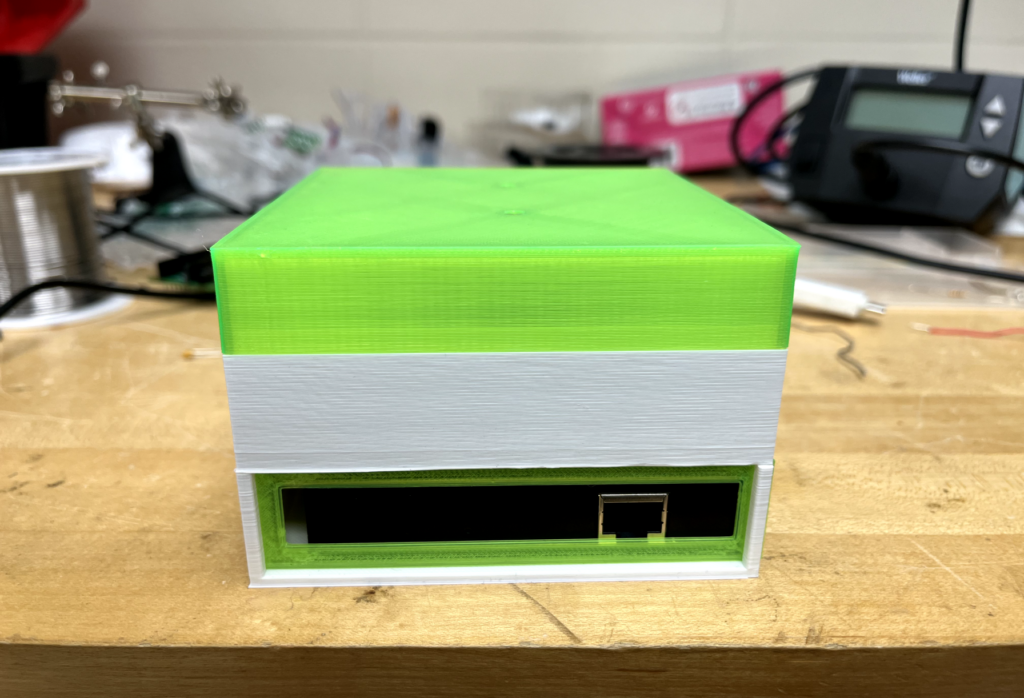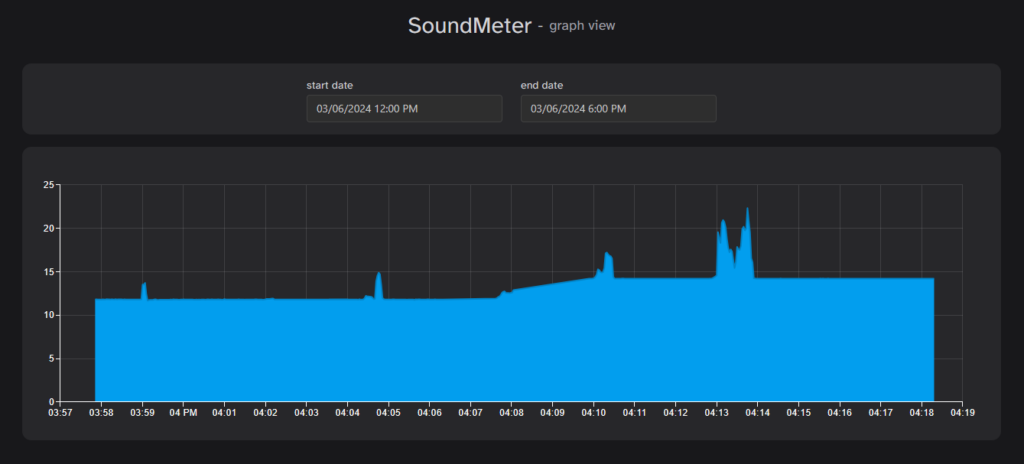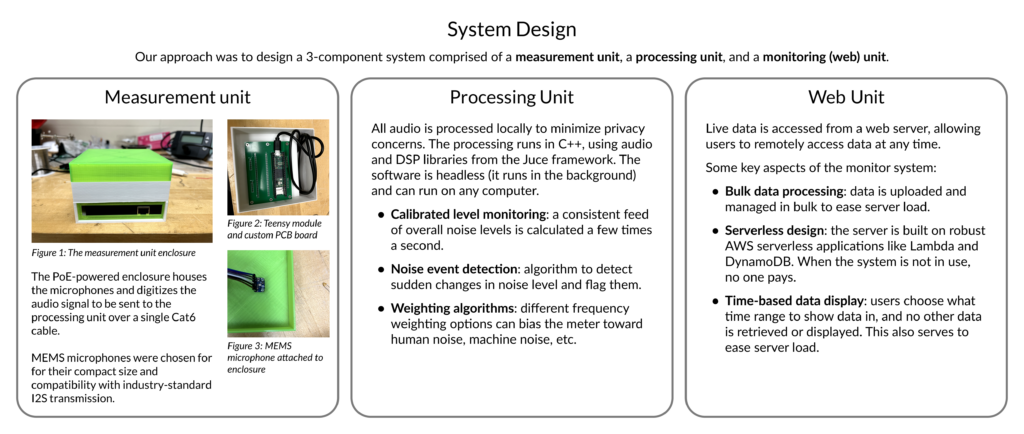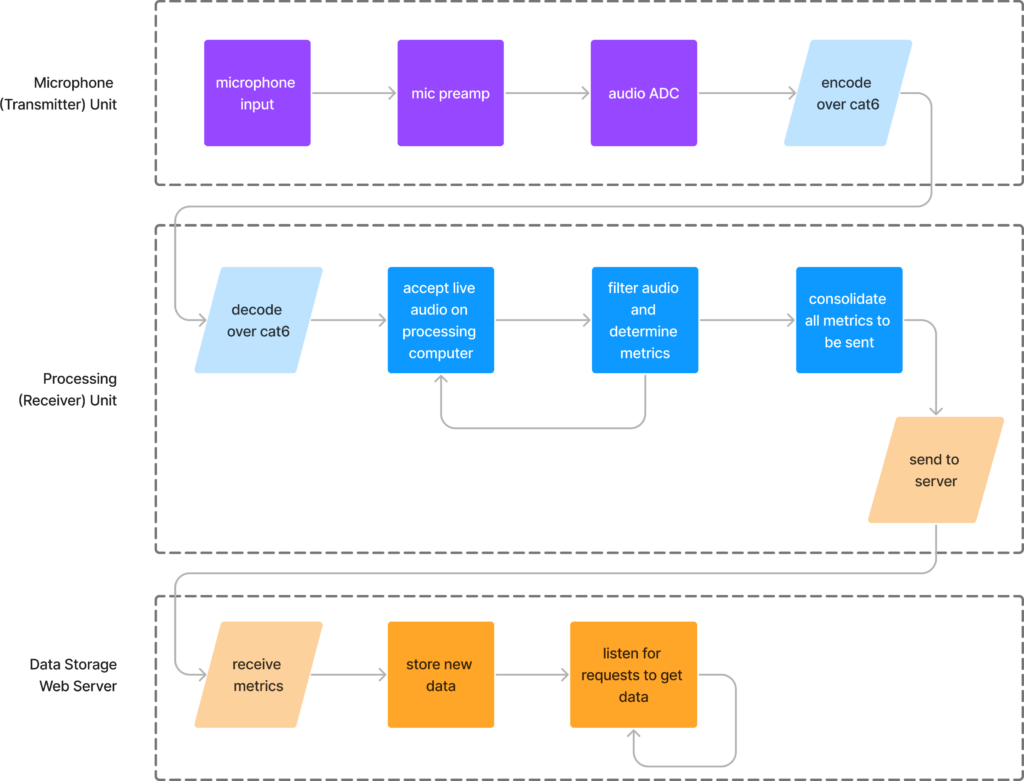
Team Members
- Michael Foster
- Eldryn Steele
- Yutong Wen
- Sebastian Xu
Mentors
Dan Phinney, Sarah Smith – Project Management
Michael Heilemann, Tre Dipassio – Additional Mentoring
Abstract
Our team has developed a solution for tracking acoustic metrics about community spaces in real time over the internet. A small, PoE-powered unit is installed in a communal space such as a lobby, office, or library, which transmits audio data to an on-site computer for processing. Metrics about the space and its occupants are processed locally, and the metrics (not the audio) are then uploaded to the accompanying website for convenient access.
System Use
The primary measurement unit is a PoE-powered enclosure that is designed to be installed into the space one wishes to measure, ideally from the ceiling. This unit is then directly connected to a processing computer using a single ethernet cable (300 meters or less).
Once data is processed, it is uploaded to a web server running on Amazon Web Services. Here is one of the data visualizations, showing level information for some of our early noise tests:

System Design
The monitoring system was built with many considerations in mind. Most important to the customer was ease and simplicity of installation, remote data access, and human-readable metrics.

With these goals in mind, the measurement unit was designed to use power over ethernet (PoE) to receive power and transmit audio over a single ethernet cable. Audio is then processed on a local computer so that no audio needs to be recorded and uploaded to an internet server. Only calculated data metrics are uploaded to the server.

Algorithms
An important aspect of this design is the algorithms which run on the processing unit. We have built a number of different algorithms for enhanced data visualization, and have many ideas for potential future additions. Here are some of the algorithms we built or tested.
- A-weighted decibel measurement: a method of frequency filtering that adjusts for the human ear’s varying sensitivity to different frequencies. It emphasizes frequencies between 500 Hz and 4 kHz—where human hearing is most sensitive—and reduces the importance of lower and higher frequencies.
- Beamforming algorithm: a signal processing technique used to enhance the directional sensitivity of arrays of mics. By combining signals from multiple mics with appropriate phase shifts and weighting, beamforming algorithms can focus on specific directions while suppressing interference from other directions.
- Noise event detection: this algorithm first runs incoming audio through a specific envelope follower, simplifying the audio into detailed level information. Then, over a set of small buffers, peak level values are compared with average level values to determine the likelihood of a “noise event” of note, where level in the room suddenly increased. Results over a certain threshold are timestamped and flagged on the web server.
Outcomes
This prototype design is an effective proof-of-concept for a potential future system that adds additional use cases and builds on this platform.
The engineering principle of minimum viable product was strictly observed throughout our design process. We believe this platform leaves a great deal of room for future development. Here are a few potential next steps and use cases:
- 2-dimensional beamforming: the device’s audio transmission is currently designed to transmit up to 4 audio channels at current size, and 8 channels with a slight modification, allowing for measurements to include highly specific directional information from the unit.
- Machine learning extensions: the processing unit software has been designed to be easily extendable, allowing future algorithms to be inserted such as population counting, specific noise identification, etc.
- Multi-unit federation: possibilities have been discussed for connecting these units to an IP network so many can be included into a single control panel.
